The Vicar of Wakefield, First Edition (335 results)
FeedbackSearch filters
Product Type
- All Product Types
- Books (335)
- Magazines & Periodicals (No further results match this refinement)
- Comics (No further results match this refinement)
- Sheet Music (No further results match this refinement)
- Art, Prints & Posters (No further results match this refinement)
- Photographs (No further results match this refinement)
- Maps (No further results match this refinement)
- Manuscripts & Paper Collectibles (No further results match this refinement)
Condition Learn more
Collectible Attributes
Language (4)
Free Shipping
Seller Location
Seller Rating
-
The Vicar of Wakefield (in 2 vols.)
Published by Printed by B. Collins for F. Newbery, Salisbury, 1766
Seller: Whitmore Rare Books, Inc. -- ABAA, ILAB, Pasadena, CA, U.S.A.
First Edition
First edition. Finely bound by Riviere & Son in full crushed morocco ornately stamped in gilt to spine and boards. All edges gilt. Inner dentelles gilt. Blue coated endpapers. Measuring 155 x 90mm and collating complete: [2], 214; [2], 223, [1, blank]. A first edition plagued by misprints and errors, there are four variants identified with no priority; the present is Temple Scott's variant B, with no catchword on page 213 of volume I, the correct catchword "him" on volume II page 39 and the correct page number on volume II page 159. A lovely copy outside and in, with just light sunning to spines; bookplates to early leaves, else fresh and with no signs of use. Housed in a custom cloth slipcase. Reportedly published as a means for thwarting debt, The Vicar of Wakefield became one of the most popular novels of the late 18th century. Mixing irony with sentimentalism, it paints a portrait of village life "narrated by Dr. Primrose, the title character, whose family endured multiple trials -- including the loss of their fortune, the seduction of a daughter, the destruction of their home by fire, and the vicar's incarceration -- before all is put right at the end" (Britannica). Plagued by numerous errors in its first edition, the printed work's imperfection was noted with amusement by its author in the printed advertisement: "There are an hundred faults in this Thing, and an hundred things might be said to prove them beauties. But it is needless. A book may be amusing with numerous errors, or it may be very dull without a single absurdity." ESTC T146176. Grolier English Hundred 53. Scott B.
-
The Vicar of Wakefield
Published by John Van Voorst, London, 1843
Seller: Whitmore Rare Books, Inc. -- ABAA, ILAB, Pasadena, CA, U.S.A.
First Edition
First Mulready illustrated edition. Octavo (8 3/16 x 5 1/2 in; 208 x 140 mm). xv, [1], 306 pp, with thirty-two black and white drawings as headpieces. Beautifully bound ca. 1930 by Rivière & Son, (stamp-signed) in full dark red crushed morocco, spine gilt in compartments. Upper board with wide gilt-tooled frame enclosing a central gilt-decorated oval with an original miniature portrait of Goldsmith in watercolor under glass. Rear board with gilt rolled borders and corner piece. Engraved (unidentified) armorial bookplate pasted onto front doublure. Bookplate of L.B. Rossbach to front free-endpaper verso. Gilt decorated turn-ins. Green moiré silk endleaves. All edges gilt. A lovely example housed in the original faux lizard, leather edged slipcase. One of the most popular books of the 18th century. This novel, both a work of sentimental fiction and a satire on the genre itself, follows the trials and eventual triumph of the Primrose family, led by the Rev'd Dr. Charles Primrose, the vicar. Goldsmith was a noted Irish wit, novelist, playwright, poet, and a member of Samuel Johnson's famed literary club, who Johnson praised as: "In genius, vivid, versatile, sublime. In style, clear, elevated, elegant." Contemporaries celebrated Goldsmith's ability to craft deceptively complex characters, most notably in the case of Charles Primrose, the vicar from The Vicar of Wakefield. The legend of the book's publication is that Goldsmith was about to be arrested by his landlady for debt, when Johnson was able to sell the manuscript of the novel to a publisher for sixty pounds, saving his friend in the nick of time. "I brought Goldsmith the money, and he discharged his rent, not without rating his landlady in a high tone for having used him so ill." Kept busy by writing quickly and voluminously for Grub Street, the center of London's disreputable part of the literary world, Goldsmith nevertheless also found time to hone novels such as The Vicar of Wakefield, poems such as The Deserted Village, and plays such as She Stoops to Conquer. Goldsmith's facility among different genres brought him fame and friendship with many great eighteenth-century British authors. "The Riviere Bindery was one of the most notable and prolific shops in London's West End from about 1840 through 1939" (Princeton). Bath-based Bayntun Bindery acquired the firm in 1939, transforming into the "Bayntun-Riviere bindery," which is still in existence and family owned. Although named after the English miniaturist Richard Cosway (1742-1821), the desirable "Cosway Binding" with its jewel-like portrait miniature set into a fine binding was first developed at the turn of the century by J.H. Stonehouse, director of London's Henry Sotheran Booksellers. Their miniatures were painstakingly crafted by the talented painter Miss C. B. Currie (1849-1940). As the style grew in popularity, other publishing houses quickly began to reproduce this techniqueeach developing their own desirable take on the aestheticreferred to as "Cosway style.".
-
THE VICAR OF WAKEFIELD; A Tale Supposed to be Written By Himself.
Published by B. Collins for F. Newbery,, Salisbury:, 1766
First Edition
Full Mauve Levant Morocco. Condition: Fine. First Edition. Thjs copy compares with Iolo A. Williams "variant A" with the exception of the following points: page 159 in Vol. II is correctly numbered; on page 213, Vol. I there is a catchword; and the catchword on page 39 in Vol. ii is "him" not "was". K12 (blank) is not present in Vol. I of this copy. Bound in full mauve, levant morocco by Riviere, tooled and decorated in gilt on front and back boards, spine in six compartments with raised spines, tooled and lettered in gilt. Contents exceedingly clean. The Vicar of Wakefield is a novel by Irish author Oliver Goldsmith. It was written in 1761 and 1762, and published in 1766, and was one of the most popular and widely read 18th-century novels among Victorians. The novel is mentioned in George Eliot's Middlemarch, Jane Austen's Emma, Charles Dickens' A Tale of Two Cities and David Copperfield, and Mary Shelley's Frankenstein. In literary history books the Vicar of Wakefield is often described as a sentimental novel, which displays the belief in the innate goodness of human beings. But it can also be read as a satire on the sentimental novel and its values, as the vicar's values are apparently not compatible with the real "sinful" world. It is only with Sir William Thornhill's help that he can get out of his calamities. Moreover, an analogy can be drawn between Mr. Primrose's suffering and the Book of Job. This is particularly relevant to the question of why evil exists. As with all great fiction, though, The Vicar of Wakefield asks us to reflect on our own behavior - in this instance, how one acts in the face of adversity. Regardless of belief in God, Primrose's behavior broadly stresses the importance of acting well as its own means to an end. Things may not always work out - though they ultimately do for Primrose - but at least a person can adhere to correct values and good behavior in the process. Those who do usually end up in a good place. The great classic magnificently bound in a custom, leather trimmed slipcase.
-
The Vicar of Wakefield: A Tale. Supposed to be written by Himself.
Published by Salisbury: by B. Collins for F. Newbery, 1766, 1766
Seller: Peter Harrington. ABA/ ILAB., London, United Kingdom
First Edition
US$ 5,120.52
Convert currencyUS$ 18.56 shipping from United Kingdom to U.S.A.Quantity: 1 available
Add to basketFirst edition of Goldsmith's sentimental masterpiece, one of the most popular novels of its age - more than 20 editions followed before the close of the century - and long recognized as one of the classics of 18th-century literature. This Salisbury edition is the true first, preceding the London edition by slightly over two months. Publication was much delayed, coming four years after the rights to the manuscript were sold to the publisher by Samuel Johnson on Goldsmith's behalf. The delay is ascribed to Goldsmith's revisions, or the publisher's reticence to commit to printing the work until Goldsmith had established a reputation. The edition was burdened with a number of typographic errors or omissions, the most significant of which have been sorted into four variants. This set is of the second variant, with no catchword on vol. I p. 213, the corrected catchword on vol. II p. 39, and vol. II p. 159 correctly numbered. ESTC T146176; Grolier English, 53, Rothschild 1028. 2 vols, duodecimo (170 x 99 mm). Contemporary calf, neatly rebacked with the original spines laid down. Housed in early 20th-century custom blue morocco pull-off case by Riviere & Son. Contemporary armorial bookplate of the Walbancke family to front pastedowns. Complete with blank A12. A little rubbed, offsetting from turn-ins, loss to front free endpaper in vol. II, a little shaken. A good copy.
-
Vicar of Wakefield
Publication Date: 1766
Seller: Bauman Rare Books, Philadelphia, PA, U.S.A.
First Edition
First Edition. "GOLDSMITH, Oliver. The Vicar of Wakefield. Salisbury: Printed by B. Collins for F. Newberry, 1766. Two volumes. 12mo, 19th-century full tan calf, raised bands, elaborately gilt-decorated spines, green morocco spine labels, marbled endpapers. $4800.First edition, first issue, of Goldsmith's best-known novel, beautifully bound by Bedford. The Vicar of Wakefield has long charmed readers "in part due to the imaginative glow that Goldsmith so effortlessly casts over the action and to his flexible and easy style" (Baugh, et al., 1061). As celebrated as the novel itself is the account which grew up around it regarding Dr. Johnson's hand in seeing it published. "Boswell tells the story that Johnson was one morning called in by Goldsmith, whose landlady had arrested him for his rent. Johnson found that Goldsmith had a novel ready for press, took it to a publisher, sold it for 60 pounds, and brought back the sum, which enabled Goldsmith to pay his rent and rate his landlady" (DNB). First issue, with the misprint "Waekefield" in running headline in Volume II, page 95. Variant (2), with no catchword on page 213 of Volume I, pages 39 and 159 in Volume II correctly printed. Rothschild 1028. Text fine, only minor wear to handsome calf binding. A beautiful copy.".
-
The Vicar of Wakefield
Published by George G. Harrap, 1929
Seller: Magnum Opus Rare Books, Missoula, MT, U.S.A.
First Edition Signed
Hardcover. Condition: Fine. 1st Edition. First Edition. A stunning copy of this limited edition of 575 copies SIGNED by Arthur Rackham. The book is in fantastic shape. The binding is tight and the boards are crisp with minor wear to the edges. The pages are exceptionally clean with NO writing, marks or bookplates in the book. A fabulous copy SIGNED by Rackham with the color plates present. We buy SIGNED Rackham books. Signed by Author(s).
-
The Vicar of Wakefield: A Tale. Supposed to be Written By Himself
Published by Printed By B. Collins, for F. Newbery, in Pater-Noster-Row, Salisbury, 1766
Seller: Karol Krysik Books ABAC/ILAB, IOBA, PBFA, Toronto, ON, Canada
First Edition
US$ 3,724.81
Convert currencyUS$ 18.00 shipping from Canada to U.S.A.Quantity: 1 available
Add to basketFull Leather. Condition: Very Good. First Edition. 12mo. 2 volumes. 16.2 cm x 9.5 cm bound in 12's. Vol. 1 pp.: [blank], title-page, [2] - Advertisemant signed Oliver Goldsmith, 214, [blank]; Vol. 2 pp.: [2 blank], title-page, 223, [2 blank]. An exquisite period binding in full brown morocco by Zaehnsdorf, with 5 raised bands, gilt-stamped spine titles, all edges gilt, inner dentelles, and marbled endpapers. Invisible repair to first blank of vol. 2, cccasional light offsetting within the text, otherwise a very handsome and collectible copy. Vol. 1 points: contains the terminal blank or K12, p. 15 omission of first word "husband" on first line, catchword on p. 13 "if" is correct; Vol. 2 points: p. 39 catchword "him", p. 95 running title "Waekcfield", p. 159 pagination correct.
-
THE VICAR OF WAKEFIELD by Oliver Goldsmith
Published by London George G. Harrap & Co. Ltd, 1929
Seller: Jonkers Rare Books, Henley on Thames, OXON, United Kingdom
First Edition
US$ 3,072.31
Convert currencyUS$ 33.14 shipping from United Kingdom to U.S.A.Quantity: 1 available
Add to basketFirst edition illustrated by Rackham. 4to. Blue/ grey cloth with lettering and vignettes in gilt. Top edge gilt. Original sketch to the verso of the half title, covering half the page and showing the eponymous vicar selling his horse. Inscribed to Rackham's brother and sister in law "To Robert + Awdry / from / Edyth + Arthur Rackham / Christmas 1929". A fine copy with a witty sketch. Pictorial silhouette endpapers. Twelve colour plates and many line drawings in the text. Every year the Rackhams presented a copy of Arthur Rackham's latest gift book to members of Edyth Rackham's large family.
-
The Vicar of Wakefield.
Published by George G. Harrap & Company Limited, London, 1929
Seller: Jeffrey H. Marks, Rare Books, ABAA, Rochester, NY, U.S.A.
First Edition
232 pp. Illustrated in color and black and white by Arthur Rackham. Large 8vo, publisher's gilt vellum, t.e.g., preserved in the publisher's plain paper wrapper and the scarce publisher's two-part box with printed paper label on short edge. First edition. Ink ownership signature on blank leaf opposite the half-title; wrapper partially split at one flap fold; otherwise a spectacular copy. The box is also very fine, except for some expert restoration at the corners of the top half.
-
The Vicar of Wakefield
Published by David McKay Company, Philadelphia, 1929
Seller: Magnum Opus Rare Books, Missoula, MT, U.S.A.
First Edition Signed
Hardcover. Condition: Fine. 1st Edition. SIGNED/LIMITED EDITION of 200 copies SIGNED by Arthur Rackham. This is the American Issue bound in the ORIGINAL publisher's full Velum cloth. A beautiful copy. The book is in great shape. The binding is tight with NO cocking or leaning and the boards are crisp with minor wear to the edges. The pages are exceptionally clean with NO marks or bookplates in the book. A superb copy in collector's condition. We buy SIGNED Rackham First Editions. Signed by Author(s).
-
The Vicar of Wakefield
Published by Printed By B. Collins, for F. Newbery, in Pater-Noster-Row, 1766
Seller: Kevin Sell, The Rare Book Sleuth, ABAA/ILAB, Minneapolis, MN, U.S.A.
First Edition
Hardcover. Condition: Very Good. 1st Edition. First edition, first printing of Goldsmith's classic novel. Four variants of the first edition have been recorded, with minor misprints common to all four, this being Rothschild's variant 4, p. 159 of volume 2 misnumbered as 165. Salisbury: Printed By B. Collins, for F. Newbery, in Pater-Noster-Row, 1766. brown polished calf boards ruled in gilt with a decorative border in blind, rebacked to style with raised bands, decorated in gilt, spine labels titled in gilt; later endpapers, bound without original blanks, pp. (iv), 214. (ii), 223. Boards show a bit of general shelfwear and rubbing, gilt rubbed, bindings tight and sturdy. Scattered light foxing to pages, offsetting to title page and the first few pages of volume 1, "Vol I" on title page nearly rubbed away, thin strip mounted to top of title page of volume 2, presumably to cover a signature of which a portion is visible, pages 129-136 of volume 2 cut a little short but not affecting text. An attractive copy of this important novel, one of the most popular and widely read 18th century novels among Victorians.
-
THE VICAR OF WAKEFIELD: A Tale, Supposed to be written by Himself
Published by F. Newbery, London, 1766
Seller: Kay Craddock - Antiquarian Bookseller, Melbourne, VIC, Australia
First Edition
US$ 2,323.93
Convert currencyUS$ 23.00 shipping from Australia to U.S.A.Quantity: 1 available
Add to basketIn two volumes. Pp. [viii]+214+[2](blank)+[vi]+224)(last blank); post 12mo; early calf, spines decorated in gilt compartments between raised bands, with gilt lettered brown morocco title label to Volume I, the other three labels (title to Volume II and both volume labels) missing, but with signs of the lettering still visible, boards with gilt edges, fore-corners a trifle worn, upper joint of Volume I cracking, spine extremities slightly chipped both volumes; bookplate of Samuel Blackwell on upper pastedowns, [earlier?] owner's name in ink on upper free endpaper Volume I, hinges starting same volume and tender in Volume II, the endpapers browned at edges, tiny hole affecting one word of text page 118 Volume I, occasional slight soiling; F. Newbery, London, 1766. Second edition. ESTC T146180. *Published in the same year as the first edition 1,000 copies of the second edition were printed. Goldsmith made significant revisions for this edition, as the first edition contained several misprints, many of them in the headlines and catchwords. This copy has the author's Advertisement and the final blank, the catchword on page 213 in Volume I, the correct numbering of page 159 in Volume II, and the catchword 'boy' on page 39 also in Volume II.
-
Condition: Very good plus. First Rackham edition, with a large half-page pen-and-ink drawing signed and dated in the year of publication by Rackham depicting two characters from the book. . Large octavo. 9.75'' x 7.25''. Original blue gilt-stamped cloth. Pictorial endpapers, top edge gilt, bottom edge uncut. Illustrated by Rackham with 12 color plates and 22 black-and-white images. Printed on laid paper with watermarks. 232 pages. Original drawing by Rackham inscribed and dated "17.11.29" on verso of half title. Touch of offsetting to endpapers, half title lightly foxed. Boards with light wear and a couple bumps, gently toned spine. Interior crisp and clean.
-
US$ 2,048.21
Convert currencyUS$ 19.87 shipping from United Kingdom to U.S.A.Quantity: 1 available
Add to basketVellum. Condition: Fine. Arthur Rackham (illustrator). First edition. A fine, de luxe, limited edition of Oliver Goldsmith's noted novel 'The Vicar of Wakefield'. Illustrated throughout, by the noted artist Arthur Rackham. Limited edition, numbered 279 of 575 copies printed.Signed by Arthur Rackham to the limitation page.With a frontispiece, and eleven plates. Collated, complete.A crisp copy of this beautifully presented work.During the "Golden Age" of British book illustration Rackham was one of its leading artists. Many of the works he illustrated were published in a De Luxe limited edition in addition to a smaller trade edition. This is one of the De Luxe editions, which were all bound in vellum bindings. Stylistically, Rackham"s illustrations reflected pen and India ink drawings. He used expressive line paired with a subtle use of watercolour to create his beautiful images.The Vicar of Wakefield is often referred to as a fictitious memoir novel. It contains several literary genres within its novel structure such as poems, histories and sermons. In the publisher's original vellum binding. Externally, in an excellent condition. A few light marks to boards, as is common with vellum. Internally, firmly bound. Fore-edge and bottom edge are uncut, as is common with this work. Pages are very bright. A few light spots to endpapers. Otherwise, pages are very clean. Fine. signed by author. book.
-
The Vicar of Wakefield ****INSCRIBED BY HUGH THOMSON TO AUSTIN DOBSON*****
Published by MacMillan, 1890
Seller: Virtual Books, Vancouver, WA, U.S.A.
First Edition Signed
Hardcover. Condition: Good. Hugh Thomson (illustrator). 1st Edition. GOOD; FIRST EDITION, thus; the pages are clean and unmarked and the binding is very good; there is a signature on the page after the flysheet dated Dec. 1893 and there is also a blind personal stamp on the title page; INSCRIBED BY ILLUSTRATOR HUGH THOMSON TO AUSTIN DOBSON; the covers show areas of wear on the front and back with some edge loss to the gold work; there is also some edgewear especially at the spine edges and yet the book remains in good condition; 12mo - over 6¾" - 7¾" tall Size: 12mo - over 6¾" - 7¾" tall. Signed by Illustrator(s).
-
The Vicar of Wakefield: A Tale. Supposed to be written by Himself. The Second Edition.
Published by London: Printed for F. Newbery., 1766
Seller: John Price Antiquarian Books, ABA, ILAB, LONDON, United Kingdom
First Edition
US$ 1,877.52
Convert currencyUS$ 11.27 shipping from United Kingdom to U.S.A.Quantity: 1 available
Add to basket2 volumes. 12mo, 160 x 100 mms., pp. [viii], 214; [vi], 225 [256 blank], recently rebound in quarter calf, raised bands between gilt rules on spine, red morocco labels, vellum tips on corners, ; fore-margins of front free end-paper and title-page of volume one slightly defective and fragile, other leaves with slight loss at edges and corners, original end-papers preserved with the autograph "Elizabeth Gibbs/ Elizabeth Isalbella Rosson" on the recto of the top margin of the front free end-paper in volume and "Elizabeth Gibbs" in volume two. The composition and printing history of the text of The Vicar of Wakefield is expertly told by Arthur Friedman in his Collected Works of Oliver Goldsmith (1966). Friedman states that "The text of the Vicar offers few difficulties. The first edition [1766] contains a fair number of misprints, many of them in the headlines and catchwords; and a few formes underwent correction of obvious errors as they were going through the press. The first is used as copy-text. The second edition was extensively revised, and most of the new readings have been admitted into the edited text." Both the Monthly Review and the Critical Review gave some space to the novel, very briefly in the former, with the rather devastating commenting that it displayed "beauties sufficient to entitle ita to almost the highest applause, and defects enough to put the discerning reader out of all patience with an author of so strangely undewriting himself.--With marks of genius equal, in some respect, to those which distinguish our most celebrated novel-writers, there are in this work, such palpable indications of the want of a thorough acquaintance with mankind, as might go near to prove the Author totally unqualified for success in this species of composition.".
-
The Vicar of Wakefield
Published by David McKay Company, Inc, Philadelphia, 1929
Seller: Burnside Rare Books, ABAA, Portland, OR, U.S.A.
First Edition Signed
Condition: Fine. Signed Limited Edition. Deluxe edition limited to 775 copies signed by Arthur Rackham, of which 575 were for sale in England and 200 for the United States; this is copy number 139 of the latter. Bound in publisher's full white vellum with gold lettering on the cover and spine, top edge gilt; with twelve full-page illustrations in color and twenty-two drawings in black and white, pictorial endpapers in gray and white. Housed in the original lidded card box. Uneven offsetting at rear board else Fine. Soiling and rubbing to box with manuscript description on edge of lid. A prepossessing production of the classic 18th century novel, further enhanced by Rackham's dreamlike pen and ink illustrations. Latimore & Haskell p. 65.
-
The Vicar of Wakefield (Signed limited edition)
Published by David McKay Company, Philadelphia, 1929
Seller: Whitmore Rare Books, Inc. -- ABAA, ILAB, Pasadena, CA, U.S.A.
First Edition Signed
Condition: Fine. First American edition. Edition deluxe, limited to 775 copies (575 for England and 200 for the United States) signed by Arthur Rackham, this being copy no. 120. Quarto (10 5/16 x 7 3/4 in; 263 x 197 mm). Twelve full page color plates, twenty-two black and white line drawings. A fine copy. Publisher's white vellum with gilt-ruled borders and lettering. Pictorial endpapers. Top edge gilt, others untrimmed. Partially unopened. Chemised in a quarter green morocco clamshell case. Reportedly published as a means for thwarting debt, The Vicar of Wakefield became one of the most popular novels of the late 18th century. Mixing irony with sentimentalism, it paints a portrait of village life "narrated by Dr. Primrose, the title character, whose family endured multiple trials -- including the loss of their fortune, the seduction of a daughter, the destruction of their home by fire, and the vicar's incarceration -- before all is put right at the end" (Britannica). Goldsmith was a noted Irish wit and a member of Samuel Johnson's famed literary club, who Johnson praised as: "In genius, vivid, versatile, sublime. In style, clear, elevated, elegant." The legend of the book's publication is that Goldsmith was about to be arrested by his landlady for debt, when Johnson was able to sell the manuscript of the novel to a publisher for sixty pounds, saving his friend in the nick of time. For this illustrated edition, Rackham embraced historical costume and his traditional whimsy, despite the more fashionable Jazz-Age and Art Deco style predominant at the time (Husdon). Arthur Rackham (1867-1939) is perhaps the most acclaimed and influential illustrator of the Golden Age of Illustration. A prolific artist even from his youth, Rackham got his start as an illustrator working for the Westminster Budget Newspaper (1892). Over the next few years, he took on more and more commissions for children's books, hitting his career high in the first three decades of the twentieth century. Rackham turned his imaginative pen to every classicfrom Shakespeare to Dickens to Poe. Hudson, p. 171. Latimore and Haskell, p. 65. Riall, p. 170. Fine.
-
The Vicar of Wakefield.
Published by John C. Nimmo, London, 1886
Seller: Raptis Rare Books, Palm Beach, FL, U.S.A.
First Edition
Finely bound example of one of the most popular and widely read novels among Victorians. Octavo, bound in full crushed levant morocco by Bayntun Bindery, gilt titles and tooling to the spine in six compartments within raised gilt bands, elaborate gilt ruling to the front an rear panels, central morocco onlay to the front panel, gilt turn-ins and inner dentelles, marbled endpapers, all edges gilt, ribbon bound in, illustrated with one hundred and fourteen colored illustrations. With a prefatory memoir by George Saintsbury. From the library of Eugene Field with his bookplate to the pastedown. Often referred to as "the poet of childhood" American author Eugene Field began publishing poetry in 1879, when his poem "Christmas Treasures" appeared in A Little Book of Western Verse. Over a dozen volumes of poetry followed and he became well known for his light-hearted poems for children, among the most famous of which are "Wynken, Blynken, and Nod" and "The Duel." Equally famous is his poem about the death of a child, "Little Boy Blue." In very good condition. Written between 1761 to 1762 and published in 1766, Goldsmith's The Vicar of Wakefield was one of the most popular and widely read 18th-century novels among Victorians. Considered both a sentimental and satirical novel, the book is mentioned in George Eliot's Middlemarch, Stendhal's The Life of Henry Brulard, Arthur Schopenhauer's "The Art of Being Right", Jane Austen's Emma, Charles Dickens' A Tale of Two Cities and David Copperfield, Mary Shelley's Frankenstein, Sarah Grand's The Heavenly Twins, Charlotte Brontë's The Professor and Villette, Louisa May Alcott's Little Women and in Johann Wolfgang von Goethe's The Sorrows of Young Werther, as well as his Dichtung und Wahrheit.
-
The Vicar Of Wakefield
Published by T.Y.Crowell, 1892
Seller: Taylor & Baumann Books, LLC, Ridgefield, CT, U.S.A.
First Edition Signed
Hardcover. Condition: Good. No Jacket. 1st Edition. 1892, First Edition , "Illustrated" as stated on binding.Thomas Y. Crowell & Co, .New York. Illustrations throughout. 280 pages in very good condition. Red linen boards with gilt edging arround the front board and gilt lettering on binding. Edges are slightly worn and rubbed, with 2 spots on front board.Floral endpapers with the one in the front missing. There is an inscription on front that appears to be signed by author --the "to" isnt clear but "From Ollie-, June 21,'97." Preface written by Austin Dobson. Inscribed by Author(s).
-
THE VICAR OF WAKEFIELD
Published by David McKay Company, 1929
Seller: Stella & Rose's Books, PBFA, Tintern, MON, United Kingdom
Association Member: PBFA
First Edition Signed
US$ 1,378.30
Convert currencyUS$ 25.19 shipping from United Kingdom to U.S.A.Quantity: 1 available
Add to basketHardback. Condition: Fine. No Jacket. Rackham, Arthur (illustrator). First edition. 1st 1929. Fine condition with no wrapper. Deluxe edition limited to 775 copies (575 for England and 200 for the United States). Bound in vellum with gold lettering and border to front cover. Gold titles and vignette to spine. Top edge gilt, others uncut. 232 pages. 10.25 x 8". 12 coloured plates and 22 b/w drawings. Grey-green and white pictorial endpapers. SIGNED by Rackham. This is copy no. 133 of the American issue. This is a stunning copy with no marks on the vellum other than a tiny rub to the edge of the rear cover and a small crack (0.5") at top and tail of the spine. The front endpaper has a 0.5" closed margin tear, there is a tiny gold gallery label to the rear pastedown, otherwise the contents are fine with all plates present and no foxing. This copy would make a wonderful gift. Packaged with care and promptly dispatched! SIGNED - please see description for details.
-
THE VICAR OF WAKEFIELD
Published by George G Harrap & Company Limited, London, Bombay, Sydney, 1929
Seller: Old Hall Bookshop, ABA ILAB PBFA BA, Brackley, United Kingdom
First Edition Signed
US$ 1,365.47
Convert currencyUS$ 13.26 shipping from United Kingdom to U.S.A.Quantity: 1 available
Add to basketFull Green Morocco. Condition: Very Good. Arthur Rackham (illustrator). Limited Edition. A BEAUTIFUL SPECIALLY BOUND COPY OF THE LIMITED EDITION SIGNED BY ARTHUR RACKHAM. LIMITED EDITION NUMBER 381 OF 575 COPIES, first illustrated edition by Arthur Rackham, SIGNED BY ARTHUR RACKHAM. 232pp, black & white illustrations in text and 12 tipped-in colour illustrations, frontispiece with tissue, limitation page signed by Arthus Rackham, patterned card endpapers, top edge gilt, bound in full green morocco with gilt borders and the initials HHS to upper board, banded gilt-and-red decorated spine (uniformly faded), gilt dentelle, additional illustrated page with crest painted in gilt and blue and printed presentation "To Harold Strachan Huth with love from Isabella Nickols, Christmas 1950", plain card slipcase. Size: 10.5 x 8.25 Inches. By Illustrator. Fiction.
-
The Vicar of Wakefield.
Published by London: George G. Harrap & Co. Ltd, 1929, 1929
Seller: Peter Harrington. ABA/ ILAB., London, United Kingdom
First Edition Signed
US$ 1,365.47
Convert currencyUS$ 18.56 shipping from United Kingdom to U.S.A.Quantity: 1 available
Add to basketSigned limited edition, number 490 of 575 English copies signed by the artist alongside an additional 200 copies for the US. Originally published in 1766, Goldsmith's masterpiece was one of the most popular novels of its age and remains a classic of English literature. "Seldom have we seen such a beautiful edition of The Vicar as is this latest production, to which Mr. Arthur Rackham has brought the fruits of his rare and admirable talent. It would have been difficult to find another artist so perfectly fitted to interpret Oliver Goldsmith's little masterpiece. The format is very charming and at the same time dignified. a volume of real value" (The Bookman, Dec. 1929). Latimore & Haskell, p. 65; Riall, p. 170. Quarto. Colour frontispiece and 11 colour plates with captions printed in blue, and line drawings in the text, by Arthur Rackham. Title page printed in red and black with vignette. Publisher's original vellum boards, gilt title to spine and front board, triple rule to front board, pictorial endpapers, top edge gilt, others untrimmed. Housed in the original card box with printed label. The occasional minor blemish, a bright clean copy with a couple of light marks to the spine. The card box is split at two corners and slightly tanned. An excellent copy.
-
The Vicar of Wakefield.
Published by London: George G. Harrap & Co. Ltd, 1929, 1929
Seller: Peter Harrington. ABA/ ILAB., London, United Kingdom
First Edition Signed
US$ 1,365.47
Convert currencyUS$ 18.56 shipping from United Kingdom to U.S.A.Quantity: 1 available
Add to basketSigned limited edition, number 526 of 575 copies signed by the artist for the UK market alongside an additional 200 copies for the US. Originally published in 1766, Goldsmith's masterpiece was among the most popular novels of its age and it remains a classic of English literature. A contemporary review in The Bookman stated, "seldom have we seen such a beautiful edition of The Vicar as is this latest production, to which Mr. Arthur Rackham has brought the fruits of his rare and admirable talent. It would have been difficult to find another artist so perfectly fitted to interpret Oliver Goldsmith's little masterpiece. The format is very charming and at the same time dignified. a volume of real value". Latimore & Haskell, p. 65; Riall, p. 170. The Bookman, December 1929. Quarto. Colour frontispiece and 11 colour plates, black and white illustrations in the text, all by Rackham. Original vellum, spine lettered and with floral device in gilt, front cover with triple rule enclosing gilt lettering, pictorial endpapers, top edge gilt, other edges untrimmed and largely unopened. Some light soiling to spine, occasional light browning: a very good copy.
-
The Vicar of Wakefield (Signed Limited Edition)
Published by David McKay Company, Philadelphia, 1929
Seller: Whitmore Rare Books, Inc. -- ABAA, ILAB, Pasadena, CA, U.S.A.
First Edition Signed
First American edition. Deluxe issue, limited to 775 copies (575 for England and 200 for the United States) signed by Arthur Rackham, this being copy no. 94 of the American issue. Publisher's white vellum, front cover ruled and lettered in gilt, spine decoratively tooled and lettered in gilt, pictorial endpapers, top edge gilt, others uncut. A few text leaves poorly opened, some scattered foxing, bookplate on front paste-down. Quarto (10 5/16 x 7 3/4 in; 263 x 197 mm). 231, [1] pp. Twelve full page color plates, twenty-two black and white line drawings. A very good copy, housed in a green cloth slipcase. Reportedly published as a means for thwarting debt, The Vicar of Wakefield became one of the most popular novels of the late 18th century. Mixing irony with sentimentalism, it paints a portrait of village life "narrated by Dr. Primrose, the title character, whose family endured multiple trials -- including the loss of their fortune, the seduction of a daughter, the destruction of their home by fire, and the vicar's incarceration -- before all is put right at the end" (Britannica). Goldsmith was a noted Irish wit and a member of Samuel Johnson's famed literary club, who Johnson praised as: "In genius, vivid, versatile, sublime. In style, clear, elevated, elegant." The legend of the book's publication is that Goldsmith was about to be arrested by his landlady for debt, when Johnson was able to sell the manuscript of the novel to a publisher for sixty pounds, saving his friend in the nick of time. For this illustrated edition, Rackham embraced historical costume and his traditional whimsy, despite the more fashionable Jazz-Age and Art Deco style predominant at the time (Husdon). Arthur Rackham (1867-1939) is perhaps the most acclaimed and influential illustrators of the Golden Age of Illustration. A prolific artist even from his youth, Rackham got his start as an illustrator working for the Westminster Budget Newspaper (1892). Over the next few years, he took on more and more commissions for children's books, hitting his career high in the first three decades of the twentieth century. Rackham turned his imaginative pen to every classicfrom Shakespeare to Dickens to Poe. Latimore and Haskell 65. Riall 170.
-
The Vicar of Wakefield Oliver Goldsmith Illustrated by Arthur Rackham. [First US Edition 12 Plates]
Published by Philadelphia: David McKay Company.
Seller: Louis88Books (Members of the PBFA), Andover, United Kingdom
Association Member: PBFA
First Edition
US$ 1,297.20
Convert currencyUS$ 33.14 shipping from United Kingdom to U.S.A.Quantity: 1 available
Add to basketHardcover. Condition: Fine. 1st Edition. Philadelphia: David McKay Company, First US Edition illustrated by Arthur Rackham. Finely bound by Sangorski and Sutcliffe and Zaehnsdorf in full crushed Morocco with gilt titles to two labels the spine, five raised bands, gilt lined compartments, gilt decorated and lined boards, silk end papers, inner gilt dentelles, with the binder s stamp to the front, with 12 full colour illustrations by Rackham. With the original cloth covers bound in at the rear of the volume. Pagination: 232pp. Provenance bookplates for Robert Marceau to the front. Approximately 9 ¾ inches tall (24.5cm). Condition Report Externally Spine fine condition bright and well preserved. Joints fine condition. Corners fine condition. Boards fine condition with gilt decoration to the boards, minor marks. Page edges fine condition all gilt. See above and photos. Internally Hinges fine condition sound. Paste downs fine condition leather turn-ins, gilt decorated, silk covered. End papers fine condition silk covered. Title very good condition tanned. Pages very good condition 12 full colour plates, tanned pages. Binding fine condition attractive. See photos.
-
THE VICAR OF WAKEFIELD. A Tale Supposed To Be Written By Himself. Two volume set.
Published by Caradoc Press, Bedford Park, Chiswich, Great Britain, 1903
Seller: Kurt Gippert Bookseller (ABAA), Chicago, IL, U.S.A.
First Edition
Hardcover. Condition: Very good+ condition. First Edition. Two volume set. Bound by Wood in London in gilt-stamped and decorated leather, with minor shelfwear, and minor cracking to the hinges at the top of the spine. Both volumes are illustrated with a frontisportrait signed in pencil "H. Geo. Webb. Sculpt". Printed in red and black. Number 303 of 360 copies printed on paper; 14 additional copies were printed on vellum. Minor toning and foxing to the endpapers. Vol. I: [iv], 107 pages. Vol. II: 211, [i] page. First edition. Size: Octavo (8vo). Book.
-
The Vicar of Wakefield; A Tale By Dr. Goldsmith
Published by R. Ackermann, At The Repository of Arts, London, 1817
Seller: Royoung Bookseller, Inc. ABAA, Ardsley, NY, U.S.A.
First Edition
leather_bound. First edition thus. 254 pages. 23.5 x 15 cm. 24 hand-colored aquatint plates by Rowlandson, all with tissue guards. Binding by Lloyd, Wallace and Lloyd, raised bands spine panels richly gilt, inner dentelles, triple gilt cover border panels, marbled endpapers. Armorial bookplates front cover pastedown, minor rubbing to spine head, text and plates clean, offsetting of latter on tissue guards. TOOLEY 436. Covers rehinged. 19th century full crushed red morocco. Aeg. Near fine.
-
Don Giovanni : Or, a Spectre on Horseback! A Comic, Heroic, Operatic, Pantomimic, Burletta-Spectacular Extravaganza in Two Acts As Performed At the Royal Circus and Surrey Theatre.the Action and Dance under the Direction of Mr. Bologna and Mr. Giroux Bound with His Vicar of Wakefield, Heart of Midlothian, Ivanhoe, and the Pirate
Published by London : Printed For John Miller, Covent-Garden, 1818
Seller: MW Books Ltd., Galway, Ireland
First Edition
US$ 1,171.29
Convert currencyUS$ 15.94 shipping from Ireland to U.S.A.Quantity: 1 available
Add to basketFirst Edition. Bound in contemporary gilt-blocked buckram. Scattered minor foxing and dust-dulling throughout. A fine set nonetheless. Scans on request. ; Description: 22 cm. Notes: Both the Don Giovanni and the Vicar of Wakefield are author presentation copies with his signature to the title pages. A scarce collection of Dibdin's central dramatic writings. 1 Kg.
-
The Vicar of Wakefield (Signed limited edition)
Published by David McKay Company, Philadelphia, 1929
Seller: Whitmore Rare Books, Inc. -- ABAA, ILAB, Pasadena, CA, U.S.A.
First Edition Signed
Condition: Near Fine. First American edition. Edition deluxe, number 101 to 775 copies (575 for England and 200 for the United States) signed by Arthur Rackham. Quarto (10 5/16 x 7 3/4 in; 263 x 197 mm). 231, [1] pp. Twelve full page color plates, twenty-two black and white line drawings. Publisher's white vellum, front cover ruled and lettered in gilt, spine decoratively tooled and lettered in gilt, pictorial endpapers, top edge gilt, others uncut. Some scattered foxing otherwise a Near Fine copy. Reportedly published as a means for thwarting debt, The Vicar of Wakefield became one of the most popular novels of the late 18th century. Mixing irony with sentimentalism, it paints a portrait of village life "narrated by Dr. Primrose, the title character, whose family endured multiple trials -- including the loss of their fortune, the seduction of a daughter, the destruction of their home by fire, and the vicar's incarceration -- before all is put right at the end" (Britannica). Goldsmith was a noted Irish wit and a member of Samuel Johnson's famed literary club, who Johnson praised as: "In genius, vivid, versatile, sublime. In style, clear, elevated, elegant." The legend of the book's publication is that Goldsmith was about to be arrested by his landlady for debt, when Johnson was able to sell the manuscript of the novel to a publisher for sixty pounds, saving his friend in the nick of time. For this illustrated edition, Rackham embraced historical costume and his traditional whimsy, despite the more fashionable Jazz-Age and Art Deco style predominant at the time (Husdon). Arthur Rackham (1867-1939) is perhaps the most acclaimed and influential illustrator of the Golden Age of Illustration. A prolific artist even from his youth, Rackham got his start as an illustrator working for the Westminster Budget Newspaper (1892). Over the next few years, he took on more and more commissions for children's books, hitting his career high in the first three decades of the twentieth century. Rackham turned his imaginative pen to every classicfrom Shakespeare to Dickens to Poe. Hudson, p. 171. Latimore and Haskell, p. 65. Riall, p. 170. Near Fine.


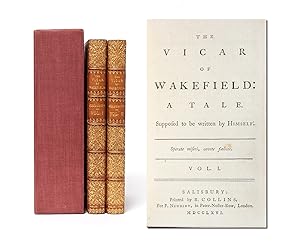


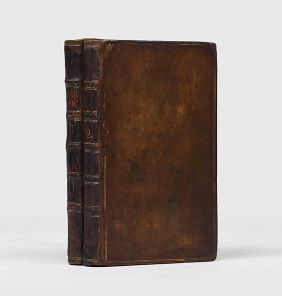
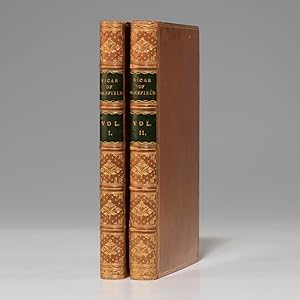
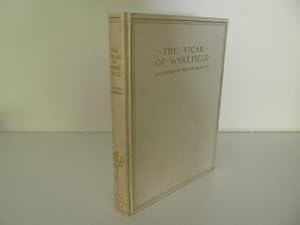
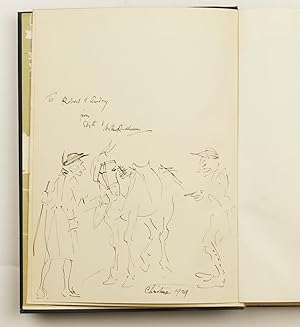


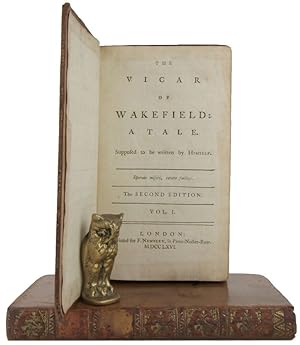
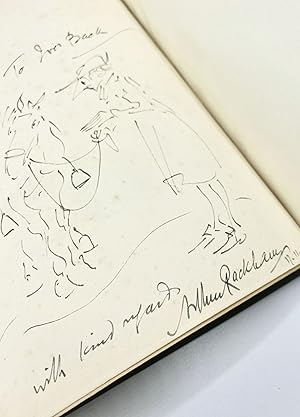











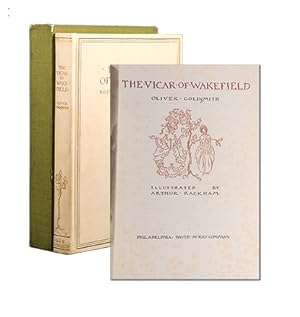
![Seller image for The Vicar of Wakefield Oliver Goldsmith Illustrated by Arthur Rackham. [First US Edition 12 Plates] for sale by Louis88Books (Members of the PBFA)](https://pictures.abebooks.com/inventory/md/md32112579387.jpg)



